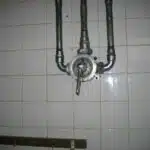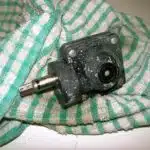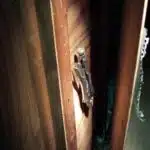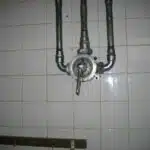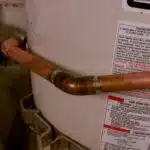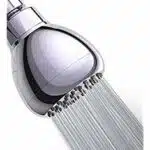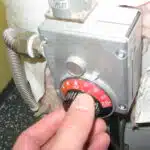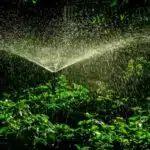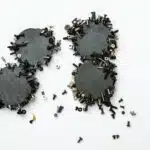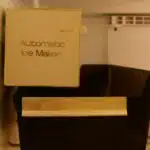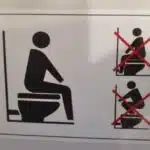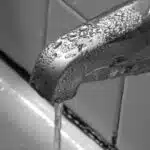As a heating engineer or plumber, it is essential to know how to bleed a radiator. Properly bleeding a radiator can be the key to ensuring that your clients’ heating systems run efficiently and effectively. It is an essential task that needs to be carried out at least once a year, especially before the winter months.
Bleeding a radiator involves releasing trapped air from the system, allowing hot water to circulate freely. The process can be simple if done correctly but may cause issues if not performed correctly. In this article, we will discuss the steps involved in bleeding a radiator, including when and why it should be done. We will also touch on some common mistakes that people make when attempting to bleed their radiators and how they can avoid them.
Understanding The Importance Of Bleeding Your Radiator
According to recent statistics, a significant number of households in the United Kingdom neglect the importance of regular radiator maintenance. Radiators are an essential component of the heating system in most homes, and their efficient functioning is crucial for maintaining a comfortable living environment. Failing to bleed your radiator regularly can significantly reduce its efficiency and increase your energy bills.
The importance of bleeding your radiator cannot be overstated. Over time, air accumulates in your heating system, which can cause cold spots on your radiator and prevent it from heating up correctly. By bleeding your radiator regularly, you allow trapped air to escape, ensuring that hot water circulates efficiently throughout the heating system. This helps to maintain a consistent temperature throughout your home while reducing energy consumption.
Regular maintenance of your radiator not only improves its functionality but also increases its lifespan. A well-maintained radiator can last for several years without requiring repair or replacement. Therefore, it is essential to make sure that you bleed your radiator at least once a year to keep it running efficiently and prevent costly repairs down the line. Knowing when to bleed your radiator is essential in maintaining an efficient heating system and reducing energy bills.
Knowing When To Bleed Your Radiator
Trapped air in a radiator can be difficult to diagnose, but there are some signs that indicate it may be time to bleed your radiator. One of the most common signs is if the top of your radiator is cold while the bottom is hot. This indicates that there may be trapped air preventing the heat from circulating properly. Another sign is if you hear gurgling or knocking noises coming from your radiators. This could be due to trapped air in the system.
Prevention tips for radiator problems include regular maintenance and cleaning. It’s important to clean your radiators periodically to prevent buildup of dust and debris, which can impede proper circulation of heat. Additionally, make sure that your heating system is serviced annually by a qualified technician to ensure that all components are functioning properly. This will help identify any potential issues before they become major problems.
If you notice any of these signs, it’s important to take action and bleed your radiator as soon as possible. In the next section, we’ll discuss what tools you’ll need for bleeding your radiator and how to do it safely and effectively. By following these steps and taking preventative measures, you can keep your heating system running smoothly all winter long.
Gathering The Tools You’ll Need
The first step in bleeding a radiator is to gather the necessary tools. As a heating engineer or plumber, you should have all the essential equipment at your disposal. These include a radiator key, a cloth, and a container to catch any water that may escape during the process.
It is important to familiarize yourself with different types of radiators before starting the bleeding process. Common types of radiators include panel radiators, convector radiators, and column radiators. Each type may require slightly different techniques for bleeding. It is also crucial to be aware of common issues that may cause problems with your radiators such as cold spots or gurgling sounds.
As you prepare to bleed your radiator, remember that safety must come first. Ensure that you turn off your heating system before commencing work on the radiator. This will prevent any accidental injury or damage to your system while you work on it. You can turn off your heating system by following specific instructions outlined in the subsequent section about turning off your heating system.
Turning Off Your Heating System
Now that you have gathered all the necessary tools, it’s time to turn off your heating system before bleeding a radiator. This step is crucial for safety precautions and to prevent any accidents from happening. Before turning off your heating system, make sure to let it cool down for at least an hour if it has been running recently. Once the system has cooled down, locate your boiler and turn off the power supply.
After turning off your heating system, wait another 10-15 minutes for it to completely shut down before proceeding with the next step. This will ensure that there is no pressure left in the system which can cause water to leak out when you try to bleed your radiators. Once you’ve waited long enough, you can begin identifying which radiators need bleeding.
Identifying which radiators need bleeding is a crucial step in maintaining a well-functioning heating system. First, check each radiator in your home by feeling them for cold spots. Cold spots indicate that there may be trapped air inside the radiator preventing proper heat flow. Next, using a radiator key or screwdriver, open up the valve located at the top of each radiator and listen for any hissing sounds indicating trapped air being released. Once all radiators have been bled and are functioning properly, you can safely restart your heating system knowing that it will work efficiently once again.
Identifying Which Radiators Need Bleeding
Trapped air can accumulate in your central heating system and cause radiators to become less efficient. Identifying trapped air is a crucial step in maintaining the efficiency of your home’s heating system. The most common sign of trapped air is when you hear bubbling or gurgling noises coming from the radiator.
Another sign that a radiator may need bleeding is if it feels cooler at the top than at the bottom. This happens because air rises, so if there is trapped air inside the radiator, it will collect at the top and prevent hot water from circulating properly. If you notice this happening, it’s time to bleed your radiator to restore its efficiency.
It’s also worth noting that some radiators may not need bleeding at all. If you have a pressurised heating system, bleeding may not be necessary as excess air will automatically escape through an expansion vessel or automatic air vent. However, if you’re unsure whether your radiators need bleeding or not, it’s always best to check with a professional before attempting any maintenance yourself. In the next section, we’ll discuss how to prepare a radiator for bleeding to ensure that the process goes smoothly and safely.
Preparing The Radiator For Bleeding
Before beginning the process of bleeding a radiator, it is crucial to ensure that the radiator is properly prepared. One essential step in this preparation is cleaning the radiators. Over time, radiators accumulate dirt and debris, which can impede the flow of heat from the radiator into the room. To clean your radiators, use a soft brush to remove any visible dust or debris. Then, wipe down each surface with a damp cloth to remove any remaining dirt.
Another crucial step in preparing your radiator for bleeding is properly venting it. If air remains trapped in your radiator after you bleed it, it can lead to reduced efficiency and uneven heating throughout your home. To vent your radiator, start by turning off your central heating system. Next, open all of the valves on your radiators except for the one you plan to bleed. Then, turn on your heating system and wait until water begins to flow through each valve before closing them again.
Properly cleaning and venting your radiator will help ensure that you get the most out of your bleeding efforts. By taking these extra steps beforehand, you’ll be able to improve the efficiency of your heating system and create a more comfortable living environment for yourself and those around you. With these preparations complete, you’re now ready to move forward with opening the bleed valve and releasing any trapped air or water from your radiator.
Opening The Bleed Valve
After preparing the radiator for bleeding, it is time to move on to the next step of opening the bleed valve. This is where the real work begins as you will need to release trapped air from the system. Think of it like a clogged drain that needs unclogging; once you open up the valve, all the air bubbles will escape, and your radiator will heat up faster than before.
To start, locate the bleed valve at the top of your radiator. Some radiators have more than one valve, so be sure to check each one. Use a radiator key or flat-blade screwdriver to turn the valve anti-clockwise until you hear a hissing sound. This means that air is escaping from the system. Once water starts flowing out of the valve, immediately close it by turning clockwise. Be careful not to over-tighten or force it shut as this can damage both the valve and radiator.
Tips for successful bleeding include having a container ready to catch any water spills and ensuring that there are no leaks after closing back the bleed valves. Precautions should also be taken when working with hot radiators; always use protective gloves and wait until they cool down before attempting any maintenance work. With these steps in mind, you should now have successfully bled your radiator and released any trapped air from it, allowing for better heating performance in your home or office space.
Transitioning into releasing trapped air: Now that we have covered opening up the bleed valves and releasing trapped air from your radiator system let’s dive into some additional tips that can help improve its heating efficiency even further.
Releasing The Trapped Air
- The first step to releasing the trapped air from a radiator is to identify the air release valve, which is usually located at the top of the radiator.
- Once the air release valve has been identified, the valve should be opened using a radiator key or similar tool.
- As the valve is opened, a hissing sound may be heard as the trapped air is released from the radiator.
- Once the air has been completely released from the radiator, the valve should be closed and the system should be bled again if necessary.
Identifying The Air Release Valve
As a heating engineer or plumber, identifying the air release valve is crucial when bleeding a radiator. It is essential to know where the valve is located to release any trapped air that may be causing problems with the heating system. The air release valve can usually be found at the top of the radiator, on one of its sides.
However, it’s not always easy to identify the air release valve, especially if it’s hidden behind other parts of the radiator. In such cases, specific troubleshooting tips can come in handy. For instance, if there is no heat coming from the radiator or if it takes longer than usual for it to warm up, then it’s likely that there is trapped air in the system. Locating and opening the air release valve will enable you to let out this trapped air and allow hot water to circulate freely through the radiator.
In conclusion, identifying and locating the air release valve forms an integral part of bleeding a radiator. Although common problems may arise when trying to locate this vital component, knowing some troubleshooting tips can help make this task more manageable. Being able to identify and open up this valve successfully will go a long way in ensuring your heating system functions correctly and efficiently.
Releasing Trapped Air
When it comes to maintaining a heating system, releasing trapped air is an essential task that every heating engineer or plumber must know how to do effectively. Trapped air can cause inefficiencies in the heating system, resulting in cold spots and increased energy bills. Releasing trapped air involves bleeding the radiator, which entails opening up the air release valve and allowing hot water to circulate freely through the system.
However, common mistakes can occur when releasing trapped air. For instance, some people often open up the wrong valve, leading to water leakage or damage to other parts of the heating system. Other times, one may not bleed the radiator correctly, which could cause more problems than solve them. Therefore, it’s essential to follow specific troubleshooting tips when releasing trapped air from your heating system.
Some troubleshooting tips include identifying and locating the air release valve correctly, turning off the central heating before commencing work on the radiator, and ensuring that all valves are closed before starting work on a particular radiator. By following these troubleshooting tips and understanding how to release trapped air correctly, you can ensure that your heating system functions efficiently and effectively without any hitches.
Monitoring The Water Pressure
Measuring pressure is an essential part of monitoring the health of your heating system. It’s important to keep an eye on the water pressure, as a significant drop in pressure can indicate a leak or other issues. You can measure the pressure using a pressure gauge, which should be attached to your boiler. A typical reading for a domestic heating system is around 1-1.5 bar.
If you notice that the pressure is dropping frequently, it’s important to troubleshoot leaks. Leaks can occur anywhere in your heating system, including pipes, valves and radiators. One way to check for leaks is to inspect all visible pipes and fittings for any signs of water damage. If you don’t spot any obvious leaks, you may need to call in a professional plumber or heating engineer who will use specialist equipment such as thermal imaging cameras and tracer gases to locate the source of the leak.
Maintaining the right water pressure and troubleshooting leaks are key steps towards keeping your heating system running smoothly throughout the year. By regularly monitoring the water pressure and checking for leaks, you can prevent more significant problems from developing further down the line. In the next section, we’ll look at how to close the bleed valve once you’ve finished bleeding your radiator to ensure that your system stays efficient and leak-free.
Closing The Bleed Valve
After monitoring the water pressure, it is time to close the bleed valve. Before doing so, it is important to note that there are cautions to consider. First, make sure that the radiator has cooled down before attempting to close the valve. Second, be careful not to overtighten the valve as this can damage it and cause leaks.
To avoid mess, place a cloth or towel beneath the valve to catch any drips. Slowly turn the valve clockwise with a key until it is fully closed. You should hear a hissing sound as air is expelled from the radiator. Once the sound stops, this means that all of the air has been released and you can stop turning the key.
It is recommended that you check for leaks after closing the bleed valve. Look for any drips or puddles around the base of the radiator or near any pipes connected to it. If you do notice any leaks, turn off your heating system immediately and contact a professional plumber or heating engineer for assistance. By following these tips and precautions, you can successfully bleed your radiator without causing any damage or creating a mess.
Checking For Leaks
- When checking for leaks in a radiator system, it is important to identify the location of any potential leak.
- Connections between radiators, valves, and other components should be inspected thoroughly to ensure they are properly sealed and secure.
- Any loose or corroded fittings should be replaced or tightened to prevent further leakage.
- Radiator valves should be checked to ensure that they are operating correctly and that the desired temperature is being maintained.
- If any leaks are found, they should be repaired as soon as possible to avoid further damage to the system or surrounding areas.
- If the radiator valves are not functioning properly, they should be replaced or adjusted to ensure optimal performance.
Identify Leaks
Identifying leaks is a crucial step in the process of checking for leaks in your radiator system. The first thing to look out for is any visible signs of water damage around the radiator or on the walls nearby. This could include damp patches, peeling paint or wallpaper, or even mold growth. If you notice any of these signs, it’s likely that there is a leak somewhere in your system.
Another way to identify leaks is to physically check the radiator itself. Start by turning off the heating system and allowing the radiator to cool down completely. Once it’s cool, use a dry cloth to wipe down all surfaces of the radiator, including valves and connections. Check the cloth for any signs of moisture – if you find wet patches, this is a clear indication that there is a leak which needs fixing.
Once you’ve identified any leaks, it’s time to take action and fix them. Depending on the severity of the leak, this could be as simple as tightening a valve or replacing a gasket, or it may require more extensive repairs such as replacing damaged pipes or fittings. Whatever the case may be, it’s important not to ignore leaks as they can cause significant damage over time and lead to expensive repairs if left unchecked. By identifying and fixing leaks promptly, you can save yourself time and money in the long run while ensuring your heating system operates efficiently and safely.
Check Connections
When it comes to checking for leaks in your radiator system, there are several crucial steps to take. One of these steps is to check the connections between different parts of the system. This is because loose or damaged connections can often be a common cause of leaks.
One of the most common mistakes people make when checking their radiator connections is not ensuring they are properly tightened. Even a small gap between two pipes or fittings can quickly lead to a leak, so it’s important to double-check that everything is secured tightly. Additionally, if you notice any signs of wear and tear on your connectors, such as cracks or corrosion, it’s best to replace them before they become a bigger problem.
Proper maintenance of your radiator connections is essential for preventing leaks and keeping your heating system running smoothly. This includes regular inspections to ensure everything is working as it should be, as well as taking care not to overtighten screws and bolts which can damage the threads and lead to further issues down the line. By taking these steps, you can help avoid costly repairs and keep your heating system in good condition for years to come.
Check Radiator Valves
Valve maintenance is an essential part of any heating system’s upkeep. Radiator valves control the flow of hot water to your radiators, and if they’re not working correctly, it can lead to a host of issues, including leaks. Troubleshooting leaks in your heating system can be a time-consuming and costly process, so it’s important to take preventative measures such as regular valve maintenance.
Checking radiator valves involves inspecting them for signs of wear and tear, such as corrosion or damage. If you notice any issues with your valves, such as difficulty turning them or leaks around the valve body, it’s best to address them as soon as possible. In some cases, simply tightening a loose valve may be enough to solve the problem, but in others, you may need to replace the valve entirely.
Regular valve maintenance can help prevent leaks and other issues with your heating system. This includes checking valves periodically for any signs of wear and tear and addressing any issues promptly. By taking these steps and ensuring that your valves are in good condition at all times, you can help keep your heating system running smoothly for years to come.
Restarting Your Heating System
After bleeding your radiator, it is crucial to restart your heating system properly. Restarting the system involves ensuring that there is no air trapped in the radiators and the boiler. The first step is to turn off the central heating and wait for the radiators and pipes to cool down. Do not attempt to restart the heating system while it’s still hot as this could lead to injury.
Once everything has cooled down, check that all valves on radiators are open. Next, turn on the boiler and set it to a high temperature, allowing it to run for at least an hour. This helps remove any remaining air that may be trapped in the system. After an hour, reduce the temperature gradually until you reach your desired level. Restarting tips also include checking that all thermostats are working correctly and replacing any faulty ones.
Maintenance advice for restarting your heating system includes regularly checking for leaks and blockages in pipes or radiators. It is also important to schedule annual maintenance checks with a professional plumber or engineer who will ensure that everything is functioning correctly and efficiently. Following these maintenance tips will not only help prevent future issues but also prolong the lifespan of your heating system.
Transition into testing your radiators: Now that you have restarted your heating system successfully, it’s time to move on to testing your radiators’ performance.
Testing Your Radiators
- To check the pressure of a radiator, use a pressure gauge to measure the water level in the boiler and the pressure of the system.
- To drain a radiator, shut off the valve and drain the water into a bucket.
- To refill a radiator, open the valve and ensure the system pressure is correct by using a pressure gauge.
- If the pressure is too low, add more water to the system to bring the pressure up to the required level.
- If the pressure is too high, bleed the radiator to allow some of the pressure to escape.
- Once the pressure is at the correct level, check for any leaks or faulty valves and make any necessary repairs.
Checking The Pressure
Are you experiencing cold spots in your home even when the heat is on? This could be a sign that your radiators need to be tested. As a heating engineer or plumber, it’s important to check the pressure of your radiators as part of troubleshooting leaks and measuring temperature.
To check the pressure, start by turning off your central heating system and allowing the radiators to cool down. Next, locate the pressure gauge on your boiler or central heating unit. If the gauge is reading below 1 bar, then this could indicate that there is low pressure in your system. To increase the pressure, simply open up the filling loop valve until it reads between 1.5 and 2 bar.
After checking the pressure, it’s also important to inspect for any leaks or damage to your radiators. Any signs of corrosion or rust should be addressed immediately as this can lead to further problems down the road. By regularly testing your radiators and addressing any issues promptly, you can ensure that your heating system is running efficiently and effectively all winter long.
Draining Radiators
As a heating engineer or plumber, it’s essential to test your radiators periodically to ensure that they are running efficiently. Aside from checking the pressure and inspecting for leaks or damage, draining your radiators is also crucial in maintaining your heating system. Draining your radiators might sound easy, but common mistakes can cost you time and money.
One of the most common mistakes when draining radiators is forgetting to turn off the central heating system before starting the process. This can cause water to continue circulating through the pipework and make it more difficult to drain your radiator properly. Another mistake is not using a suitable container to catch the water while draining. Troubleshooting tips include ensuring that all valves are turned off before starting and opening the air vent on your radiator before draining.
Benefits of draining radiators include improving your heating system’s efficiency and prolonging its lifespan. It also helps reduce energy bills by making sure that heat is distributed evenly throughout your home. Draining radiators can be cost-effective as well since it can prevent further damage caused by corrosion or rust.
In conclusion, testing your radiators regularly includes checking their pressure, inspecting for leaks or damage, and draining them correctly. As a heating engineer or plumber, avoiding common mistakes while performing these tasks can save you time and money in the long run. The benefits of testing and maintaining your heating system efficiently outweigh any costs incurred in doing so.
Refilling Radiators
As a heating engineer or plumber, ensuring that your radiators are running efficiently is crucial in maintaining your heating system. Refilling radiators is an essential part of this process and can be a bit tricky if you don’t know what you’re doing. Common mistakes when refilling radiators include not closing the bleed valve before refilling and forgetting to turn off the central heating system.
Troubleshooting tips for refilling radiators include ensuring that all valves are closed before starting and checking the pressure gauge to make sure that it’s at the correct level. If you notice any leaks or damage during the refilling process, it’s best to call in a professional to avoid further damage. Remember to open each radiator’s air vent after refilling to release any trapped air.
Properly refilling your radiators is essential for maintaining your heating system’s efficiency and prolonging its lifespan. It helps ensure that heat is distributed evenly throughout your home, reducing energy bills and preventing further damage caused by corrosion or rust. By avoiding common mistakes and following these troubleshooting tips, you can save time and money while keeping your heating system running smoothly.
Common Mistakes To Avoid
After testing your radiators, you may find that some of them are not heating up as efficiently as others. This could be an indication that they need bleeding. Bleeding a radiator is the process of releasing trapped air from inside the system, allowing hot water to flow freely and heat up the entire radiator evenly. This task can be easily done by yourself or with the help of a professional.
One common mistake people make when bleeding their radiators is over tightening the valve after releasing the air. This can cause damage to the valve and create leaks, leading to more costly repairs in the future. It is important to only tighten the valve enough to stop any water from escaping without causing any damage. Another mistake is not turning off your heating system before starting the bleeding process, which can lead to scalding hot water spraying out of the radiator and causing injury.
When deciding whether to bleed your radiators yourself or hire a professional, there are a few things to consider. DIY can save money but if done incorrectly it can lead to further problems down the line. A professional will have experience and knowledge on how best to approach each individual radiator and avoid any potential issues. Additionally, older radiators may require more effort or experience when bleeding due to age-related wear and tear on valves and pipes.
To prevent making these common mistakes when bleeding your radiators, ensure you only tighten valves enough without causing damage and turn off your heating system before starting. Consider whether DIY or hiring a professional is best for you based on your experience level and needs. In our next section, we will discuss troubleshooting tips for common radiator issues that may arise during this process.
Troubleshooting Tips For Radiator Issues
Common causes of radiator issues include air trapped in the system, a buildup of debris or sediment, and faulty valves. These issues can cause uneven heating or no heat at all. It is important to address these problems as soon as possible to prevent further damage to the system.
DIY solutions for minor radiator problems include bleeding the radiators to release any trapped air, cleaning debris from the system, and tightening loose valves. However, it is important to note that major issues such as leaks or malfunctioning components should be addressed by a professional heating engineer or plumber.
Regular maintenance and inspection of your heating system can help prevent radiator issues from occurring. It is recommended to have your system serviced annually by a qualified technician to ensure optimal performance and efficiency. By taking proactive measures, you can save money on costly repairs and improve the overall comfort level of your home.
Conclusion
Bleeding your radiator is an essential step in maintaining the efficiency of your heating system. By removing trapped air, you can ensure that all the radiators in your home are working optimally, providing heat evenly and effectively. Knowing when to bleed your radiator is critical, as neglecting this task can lead to increased energy bills and a decrease in the lifespan of your heating system.
To begin, gather the necessary tools and turn off your heating system. Identify which radiators need bleeding and restart your heating system before testing each radiator individually. Avoid common mistakes such as opening the valve too quickly or not releasing enough air pressure. In case of any issues, follow troubleshooting tips or seek professional help.
As a heating engineer or plumber, it is crucial to educate customers on the importance of regular maintenance for their radiators. Bleeding a radiator may seem like a simple task, but it can have a significant impact on their energy bills and comfort levels during colder months. By following these steps and avoiding common mistakes, customers can ensure that their radiators are functioning correctly and efficiently, saving them money and providing warmth throughout their homes.
Image Credits
- “Chart of Electromagnetic Radiations” by Lawrence Livermore National Laboratory (LLNL) (featured)


